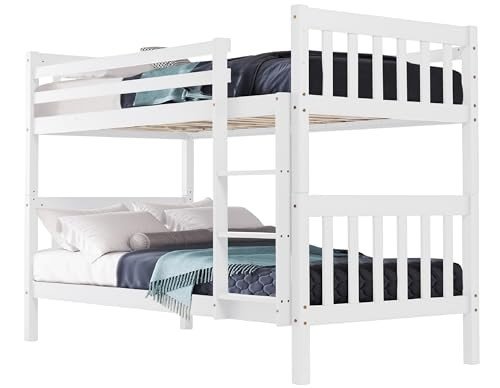문의사항입니다.
페이지 정보
작성자 Stephan Bedford 이메일 stephanbedford@outlook.com 연락처 주소 작성일25-08-29 18:35관련링크
본문
The Ultimate Guide to Bunk Beds for Kids: Safety, Styles, and Solutions
Bunk beds have actually long been a popular choice among moms and dads looking for to enhance space in their kids's bedrooms. With benefits that surpass their compact style, bunk beds provide an enjoyable and functional sleeping plan while motivating sibling bonding and cultivating creativity. In this comprehensive guide, we explore numerous elements of bunk beds for kids, including safety factors to consider, different styles readily available, and suggestions for picking the ideal one for your family.
Why Choose Bunk Beds?
Bunk beds are designed to stack one bed on top of another, making use of vertical space to create more space for play and storage. They are especially beneficial for families with numerous kids or restricted bed room space. Additionally, they supply an adventurous sleeping environment that kids often enjoy.
Secret Advantages of Bunk Beds:
- Space-saving design: Ideal for little rooms or shared areas.
- Cost-efficient: Often more economical than buying 2 different beds.
- Motivates social interaction: Promotes bonding among siblings or friends.
- Flexible options: Available in numerous designs and configurations to match any space style.
Safety First: Essential Considerations
When picking a bunk bed for kids, safety needs to be the leading concern. The following functions are essential for making sure a safe and secure sleeping environment:
Important Safety Features:
- Sturdy Construction: Ensure that the bed frame is made of resilient materials such as solid wood or metal.
- Guardrails: Bunk beds must have guardrails on both sides of the upper bunk to prevent falls.
- Ladder Safety: A strong, integrated ladder or stairs with anti-slip rungs is vital for safe access to the leading bunk.
- Weight Limit: Check the producer's weight limitation capacity for both the top and bottom bunk.
- Mattress Size: Use the right bed mattress size as specified by the bed producer to make sure a snug fit within the bed frame.
Safety Tips for Parents:
- Monitor Sleep Habits: Teach kids the value of not playing on or leaping off the bunk beds.
- Age Appropriateness: Generally, the upper bunk is appropriate for kids aged 6 and older.
- Regular Inspections: Periodically inspect for any loose bolts, screws, or structural damage.
Designs of Bunk Beds
Bunk beds come in a variety of styles, allowing moms and dads to select one that matches their kid's space design while meeting specific requirements. Below are some popular designs:
Popular Bunk Bed Styles:
- Traditional Bunk Beds: Simple and timeless styles made from wood or metal with no additional features.
- Loft Beds: Features a raised leading bunk with space underneath for a desk, play location, or additional storage.
- L-Shaped Bunk Beds: Arranged in an L-shape, often ideal for corner areas and can have extra storage choices.
- Twin over Full Bunk Beds: A twin bed on the top and a bigger full-sized bed on the bottom, accommodating kids or teens of different ages.
- Triple Bunk Beds: Designed to fit 3 beds in a single footprint, ideal for larger households or slumber parties.
A Comparison of Bunk Bed Styles
| Bunk Bed Style | Description | Best For |
|---|---|---|
| Conventional | Traditional design with two stacked beds | Standard bedroom setups |
| Loft Bed | Raised bed with usable space underneath | Homework or play areas |
| L-Shaped | Bunk beds organized in an L-shape | Corner spaces |
| Twin over Full | Twin bed on top, complete bed below | Various age siblings |
| Triple Bunk | 3 stacked beds | Large households or pajama parties |
Choosing the Right Bunk Bed
When looking for the perfect bunk bed, consider the list below factors to guarantee you make an informed decision:
Key Factors to Consider:
- Room Size: Measure the room measurements to identify the suitable size and height of the bunk bed.
- Kid's Age: Consider the age of your child(ren) when selecting a style and safety features.
- Functionality: Think about how much storage or play space you need and whether the bunk bed ought to serve extra purposes.
- Budget plan: Set a budget that consists of not just the bunk bed but also the required bed mattress and devices like bed linen or security gates.
Frequently Asked Questions About Bunk Beds for Kids
1. What age is appropriate for a child to sleep in the top bunk?
Normally, kids aged 6 and older need to be able to safely oversleep the leading bunk, though you ought to constantly consider your kid's maturity level.

2. Are bunk beds safe for young children?
It is not a good idea for toddlers or extremely young kids to sleep in the top bunk due to the danger of falling.
3. How do I maintain the bunk bed?
Examine the bed frequently for any indications of wear and tear, tightening screws, and cleaning the bed mattress to make sure extended security and sturdiness.

4. Can I convert a bunk bed into 2 separate beds?
Lots of bunk beds are designed to be convertible, enabling you to separate the beds when needed. Examine the maker's requirements before acquiring.
5. How can I optimize space in a bunk bed room?
Make use of under-bed drawers, shelves, or lofted styles to produce additional storage options in a room with a bunk bed.
Bunk beds offer a delightful mix of fun, functionality, and space-saving utility, making them an ideal choice for young families. By considering security functions, various designs, and useful aspects such as room size and age suitability, parents can pick the best bunk bed for their kid's needs. With the best choice, bunk beds can transform a bed room into a magical space that motivates play, creativity, and bonding among siblings. Constantly remember to focus on safety and upkeep to make the many of this special sleeping plan.
